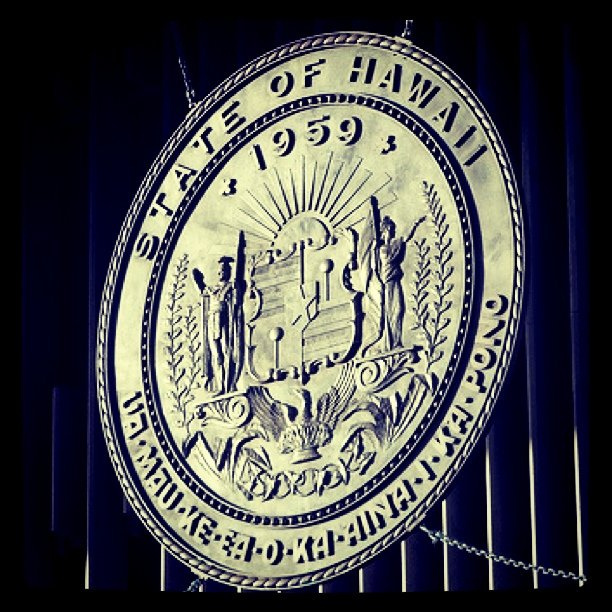Call it the Frankenstein of bad legislation. The Akaka Bill is back in the Senate. And while some pundits don’t give it much of a future in the House of Representatives, the Senate gave it a hearing this past Thursday. In truth, there is far too much riding on this bill for opponents to ever feel secure about defeating it. At least, not unless there is a change in the culture that has created this issue. Part of this is the misapprehension that Native Hawaiians are, as a group, severely disadvantaged . . . a myth that some have done nothing to refute, even though you might imagine that it might be nice to see a little good news now and again. And so–in order to better inform the discussion–consider the latest US census information about Native Hawaiians:
Census Bureau Reports Revenue for Native Hawaiian- and Other Pacific Islander-Owned Businesses Increased 52 Percent from 2002 to 2007
The number of Native Hawaiian- and Other Pacific Islander-owned businesses increased 31.1 percent between 2002 and 2007, to 37,957 businesses, the U.S. Census Bureau announced today. These businesses generated $6.5 billion in receipts in 2007, a 51.6 percent increase from 2002. In contrast, the total number of U.S. businesses increased 17.9 percent between 2002 and 2007; total business receipts rose 32.9 percent.
These new data come from the Survey of Business Owners: Native Hawaiian- and Other Pacific Islander-Owned Businesses: 2007.
http://www.census.gov/econ/sbo/
The survey provides detailed information every five years for Native Hawaiian- and Other Pacific Islander-owned businesses, including the number of firms, sales and receipts, number of paid employees and annual payroll.
Data are presented by geographic area (nation, state, county, city and metro area), industry and size of business. Preliminary national and state data were released in July 2010.
“This important look at the economic activity of Native Hawaiian- and Other Pacific Islander-owned businesses is the only comprehensive and regularly collected data on this group,†said Tom Mesenbourg, deputy director of the Census Bureau. “These data confirm that businesses owned by Native Hawaiians and Other Pacific Islanders continue to grow both in number and in sales at rates that are faster than national rates for all businesses.â€
People of Native Hawaiian origin owned 55.6 percent of all Native Hawaiian- and Other Pacific Islander-owned businesses in 2007. Guamanian- or Chamorro-owned businesses accounted for 9.6 percent, Samoan-owned businesses for 8.0 percent, and businesses owned by people of Other Pacific Islander descent, for 24.6 percent.
States with the highest number of Native Hawaiian- and Other Pacific Islander-owned businesses were Hawaii, with 11,383 (30.0 percent of all Native Hawaiian- and Pacific Islander-owned businesses nationwide), and California, with 9,255 (24.4 percent).
Among counties, Honolulu had the largest number of Native Hawaiian- and Other Pacific Islander-owned businesses, with 6,721; followed by Los Angeles, with 2,804; Maui, with 2,111; and Hawaii, with 1,722.
Among metropolitan areas, Honolulu had the largest number of Native Hawaiian- and Other Pacific Islander-owned businesses, with 6,721 (17.7 percent of all Native Hawaiian- and Other Pacific Islander-owned businesses nationwide), followed by Los Angeles-Long Beach-Santa Ana, with 3,675 (9.7 percent).
Other highlights:
* Of the 37,957 Native Hawaiian- and Other Pacific Islander-owned businesses in 2007, 4,172 had paid employees. These businesses employed 38,750 people, an increase of 32.2 percent, and their payrolls totaled $1.3 billion, an increase of 54.1 percent from 2002. Employer business receipts totaled $5.4 billion, an increase of 54.4 percent. Average receipts of these firms were $1.3 million.
* The number of Native Hawaiian- and Other Pacific Islander-owned businesses with no paid employees totaled 33,785, an increase of 33.8 percent. These nonemployers’ business receipts totaled $1.1 billion. Average receipts of these firms were $31,991.
* The number of Native Hawaiian- and Other Pacific Islander-owned businesses with receipts of $1.0 million or more was 884 in 2007.
* The number of Native Hawaiian- and Other Pacific Islander-owned businesses with 100 or more employees increased from 28 to 37 (32.1 percent).
* Construction and retail trade accounted for 44.1 percent of all Native Hawaiian- and Other Pacific Islander-owned business receipts.
The Survey of Business Owners defines Native Hawaiian- and Other Pacific Islander-owned businesses as firms in which Native Hawaiians, Guamanians, Chamorros, Samoans, and Other Pacific Islanders own 51 percent or more of the equity, interest or stock of the business. Additional data from the survey highlighting other minority- and veteran-owned businesses will be issued over the next few months. Subsequently, separate data sets will be issued highlighting additional characteristics of all businesses and their owners.
-X-
The Survey of Business Owners is conducted every five years as part of the economic census. The 2007 survey collected data from a sample of more than 2.3 million businesses. Data collected in a sample survey are subject to sampling variability, as well as nonsampling errors. Sources of nonsampling errors include errors of response, nonreporting and coverage. More details concerning the SBO survey design, methodology and data limitations can be found at <http://www.census.gov/econ/sbo/methodology.html>.









